Nik Sharma's Blog, page 9
October 12, 2020
The Flavor Equation: Spotlight on Aroma
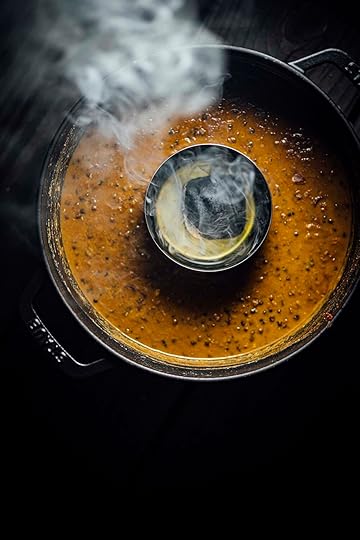
Aroma is the sense most strongly associated with our memory; when we reminisce about food or drink, it’s their unique scents that we recollect, and rarely their taste. That’s why Aroma is the focus of this week’s post about The Flavor Equation. Spices are used to enhance or build aroma, and there are a few of my favorites that make regular appearances in my recipes: Aleppo pepper, saffron and nigella seeds are few of them.
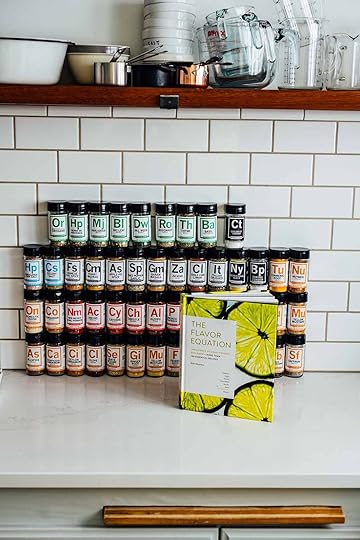
When I first learned to cook with my mother and grandmother, I noticed how aromas were carefully built into the food we prepared. If we made a stock or a dal, either spices or aromatic ingredients like onions, garlic, and ginger were cooked in fat over heat to release their aromas and draw them into the fat. Sometimes aromatic ingredients were added toward the end, just before the food would make its way to the table—like fresh lime zest scattered over a slice of pound cake, so you’d smell the citrus aromas immediately.
I use a variety of spices in my recipes, but some of my favorite spices include:
Aleppo flakes: A red chilli flake noted for its rich bright red capsaicin pigment and distinct flavor. Not only can you use it as a way to add heat to food but it is also wonderful in hot oil and imparts a bright red color. Also look to other varieties like Maras and Urfa and pay attention to the differences in their flavor, color, and aroma. These three chilli flakes carry a smoky flavor but urfa is the one with a scent reminiscent of chocolate.
Saffron: A little bit goes a long way with this spice. It gives an orange tinge to sweets and savory dishes but also adds a unique floral aroma.
Omani limes: Sometimes called Persian Dried Limes are a staple in Persian cooking. I love them for their smoky citrus flavor and smell. Add them to savory and sweet preparations.
Nigella seeds: Often erroneously called the onion seed, it won’t produce onions but rather beautiful flowers. Use this for its onion-like flavor when making breads just like you would sprinkle sesame seeds on buns or flat-bread. I also added it to tadkas and other savory preparations for its nutty fragrance.
Some additional tips I think are worthwhile to share: When you’re cooking, smell your ingredients as often as possible. Because most aroma molecules are highly volatile, they start to evaporate as they’re exposed to air. Temperature can also have an effect: The warmer the room, the more quickly the aroma molecules evaporate and escape.
Buy dry, whole spices and herbs in small amounts based on your needs and store them away from sunlight, in airtight containers in a cool, dark place. Lately I’ve been partial to the ones I’ve been using from Spiceology, which offers whole spices in most of the kitchen essentials. For some dishes, fresh herbs are added just before serving to take full advantage of their aroma, but in other dishes, these can also be incorporated into the dish and cooked.
Another tip I’ve learned over the years with recipe testing is to make sure your spices are under a year old, otherwise they lose their potency quickly, especially when ground. You will need to increase the amount of spices listed in a recipe due to this decrease in flavor. I suggest buying your spices from companies like Spiceology who don’t grind their spices until they are ready to pack and ship direct to your doorstep. Not only will the spice have a richer smell and deeper flavor, but their coloring will be more vibrant too.
I’d love to hear what your favorite spices are and how you incorporate them into your cooking. You can also experiment with the spices and aroma of Baked Sweet Potatoes with Maple Crème Fraiche – a recipe from The Flavor Equation that I am sharing with you tomorrow.
Find out how else you can immerse yourself in The Flavor Equation experience, including a chance to win a full revamp of your spice drawer with the A-Z line from Spiceology, and other products from participating partners here .
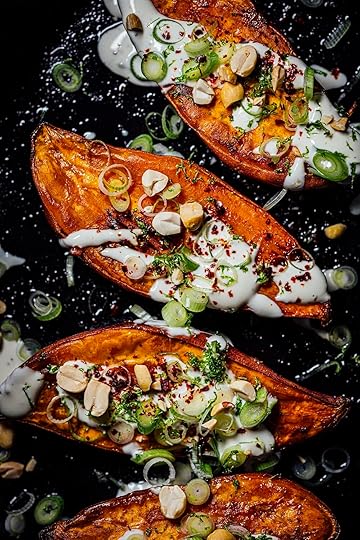
October 6, 2020
The Flavor Equation: Chickpea, Spinach, and Potato "Samosa Pie"
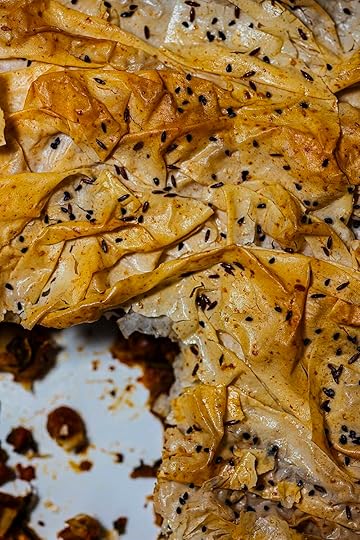
This week, I’m thrilled to share a new recipe from my book, The Flavor Equation, my “Samosa Pie”. Don’t forget to enter the GIVEAWAY to win a year’s worth supply of California Olive Ranch’s olive oil. Good luck!
Reprinted from The Flavor Equation by Nik Sharma with permission by Chronicle Books, 2020
CHICKPEA, SPINACH + POTATO “SAMOSA PIE”
Samosas are individual hand pie–size creations that encase tasty fillings in an equally tasty crust. The choices for fillings are endless, including the popular spiced potatoes, spiced chickpeas, paneer, and ground lamb. I make this larger version that I’ve nicknamed the “samosa pie” whenever I want the flavor and texture of a samosa for dinner but I’m low on time. I’ve replaced the samosa pastry with store-bought phyllo sheets; they give the crust a delicate, paper-thin texture that crumbles with a crunch in every bite.

THE FLAVOR APPROACH
A mixture of butter and olive oil moisturizes the phyllo sheets and helps turn them crisp as they cook in the oven.
Black pepper and chilli with ginger and the spices in the garam masala add heat and flavor as well as aroma.
Nigella and cumin seeds add flavor and crunchiness to the pastry.
SERVES 12 / MAKES ONE 9 IN [23 CM] SQUARE CAKE
For the filling:
Fine sea salt
2 medium russet potatoes (total weight 15 1/2 oz [445 g]), peeled and diced
2 Tbsp extra-virgin olive oil
1 medium white or yellow onion (9 1/4 oz [260 g]), diced
1 in [2.5 cm] piece fresh ginger, cut into matchsticks
1 tsp garam masala, homemade or store-bought
1 tsp ground black pepper
½ tsp ground turmeric
½ tsp red chilli powder
5 oz [140 g] fresh baby spinach leaves, chopped
Two 15 1/2 oz [445 g] cans chickpeas, rinsed and drained
1 tsp amchur
2 Tbsp chopped cilantro
1 fresh chilli, minced
For the phyllo crust:
1/4 cup [55 g] unsalted butter, melted
¼ cup [60 ml] extra-virgin olive oil
10 sheets phyllo, thawed
1 tsp cumin seeds
1 tsp nigella seeds
Set a rack on the lower one-third level of the oven and preheat to 350°F [177°C].
Set a large pot of salted water to boil over medium-high heat. Add the diced potatoes and cook until they are just tender but retain their structure, 4 to 5 minutes. Drain the potatoes.
Heat the olive oil in a medium saucepan over medium-high heat. Add the onions and sauté until they turn pale and translucent, 4 to 5 minutes. Lower the heat to medium-low and add the ginger, garam masala, black pepper, turmeric, and chilli powder. Sauté until the spices are fragrant, 30 to 45 seconds. Add the potatoes and cook for 2 minutes, until they are completely tender in the center. Add the spinach and cook until the leaves have wilted and released most of their liquid, 2 to 3 minutes. Fold in the chickpeas and amchur, season with salt, and cook for about 1 minute. Remove from the heat. Add the cilantro and chilli. Taste and season with salt if needed.
To prepare the phyllo crust, combine the butter and olive oil in a small bowl. Brush a 9 by 12 by 2 in [23 by 30.5 by 5 cm] rectangular baking pan with the butter–olive oil mixture. Line the base of the pan with 5 sheets of phyllo, brushing each sheet with a little bit of the butter–olive oil mixture. Make sure any overhanging phyllo sheets are also brushed with the mixture. Add the chickpea mixture and level it with a large spoon or spatula.
Add the remaining phyllo sheets on top, brushing each with the butter–olive oil mixture. As you place each one, pleat slightly to create a ruffled surface. Sprinkle the cumin and nigella seeds on top. Fold in any overhanging phyllo and neatly tuck them in around the sides. Bake the pie in the preheated oven until the crust is golden brown on top and on the sides, 30 to 45 minutes, rotating halfway through baking. Let cool in the pan for 5 minutes before serving.
The pie is best eaten the day it is prepared.
The Flavor Equation: CHICKPEA, SPINACH + POTATO “SAMOSA PIE”

This week, I’m thrilled to share a new recipe from my book, The Flavor Equation, my “Samosa Pie”. Don’t forget to enter the GIVEAWAY to win a year’s worth supply of California Olive Ranch’s olive oil. Good luck!
Reprinted from The Flavor Equation by Nik Sharma with permission by Chronicle Books, 2020
CHICKPEA, SPINACH + POTATO “SAMOSA PIE”
Samosas are individual hand pie–size creations that encase tasty fillings in an equally tasty crust. The choices for fillings are endless, including the popular spiced potatoes, spiced chickpeas, paneer, and ground lamb. I make this larger version that I’ve nicknamed the “samosa pie” whenever I want the flavor and texture of a samosa for dinner but I’m low on time. I’ve replaced the samosa pastry with store-bought phyllo sheets; they give the crust a delicate, paper-thin texture that crumbles with a crunch in every bite.

THE FLAVOR APPROACH
A mixture of butter and olive oil moisturizes the phyllo sheets and helps turn them crisp as they cook in the oven.
Black pepper and chilli with ginger and the spices in the garam masala add heat and flavor as well as aroma.
Nigella and cumin seeds add flavor and crunchiness to the pastry.
SERVES 12 / MAKES ONE 9 IN [23 CM] SQUARE CAKE AND2 CUPS [480 ML] SAUCE
For the filling:
Fine sea salt
2 medium russet potatoes (total weight 15 1/2 oz [445 g]), peeled and diced
2 Tbsp extra-virgin olive oil
1 medium white or yellow onion (9 1/4 oz [260 g]), diced
1 in [2.5 cm] piece fresh ginger, cut into matchsticks
1 tsp garam masala, homemade or store-bought
1 tsp ground black pepper
½ tsp ground turmeric
½ tsp red chilli powder
5 oz [140 g] fresh baby spinach leaves, chopped
Two 15 1/2 oz [445 g] cans chickpeas, rinsed and drained
1 tsp amchur
2 Tbsp chopped cilantro
1 fresh chilli, minced
For the phyllo crust:
1/4 cup [55 g] unsalted butter, melted
¼ cup [60 ml] extra-virgin olive oil
10 sheets phyllo, thawed
1 tsp cumin seeds
1 tsp nigella seeds
Set a rack on the lower one-third level of the oven and preheat to 350°F [177°C].
Set a large pot of salted water to boil over medium-high heat. Add the diced potatoes and cook until they are just tender but retain their structure, 4 to 5 minutes. Drain the potatoes.
Heat the olive oil in a medium saucepan over medium-high heat. Add the onions and sauté until they turn pale and translucent, 4 to 5 minutes. Lower the heat to medium-low and add the ginger, garam masala, black pepper, turmeric, and chilli powder. Sauté until the spices are fragrant, 30 to 45 seconds. Add the potatoes and cook for 2 minutes, until they are completely tender in the center. Add the spinach and cook until the leaves have wilted and released most of their liquid, 2 to 3 minutes. Fold in the chickpeas and amchur, season with salt, and cook for about 1 minute. Remove from the heat. Add the cilantro and chilli. Taste and season with salt if needed.
To prepare the phyllo crust, combine the butter and olive oil in a small bowl. Brush a 9 by 12 by 2 in [23 by 30.5 by 5 cm] rectangular baking pan with the butter–olive oil mixture. Line the base of the pan with 5 sheets of phyllo, brushing each sheet with a little bit of the butter–olive oil mixture. Make sure any overhanging phyllo sheets are also brushed with the mixture. Add the chickpea mixture and level it with a large spoon or spatula.
Add the remaining phyllo sheets on top, brushing each with the butter–olive oil mixture. As you place each one, pleat slightly to create a ruffled surface. Sprinkle the cumin and nigella seeds on top. Fold in any overhanging phyllo and neatly tuck them in around the sides. Bake the pie in the preheated oven until the crust is golden brown on top and on the sides, 30 to 45 minutes, rotating halfway through baking. Let cool in the pan for 5 minutes before serving.
The pie is best eaten the day it is prepared.
October 4, 2020
The Flavor Equation: Spotlight on Mouthfeel

The sensation of taste begins in the mouth, where we begin ingesting our food in its initial physical form. In this week’s post about Mouthfeel, I interview Mary Mori, Director of Technical Services at California Olive Ranch. In this role, she oversees the quality, regulatory compliance, and research departments, as well as new product development for both the California Olive Ranch and its sister brand, Lucini Italia.
In the conversation below, we share our thoughts on how and why our ingredients behave and the effect these have on flavor, and how this has made us better cooks. Since we both have a food science background, we really go into detail on some points. Still, I hope you enjoy it.

NIK: The first chemistry lab I took in high school gave me concrete evidence of how food and science were interconnected. As part of an experiment to understand pH, acids, and bases, my professor dipped a piece of turmeric-coated filter paper into a soap solution. It quickly went from a bright orange-yellow to a deep red. She then took the same strip and dipped it into a tube of vinegar, and it instantly switched back to yellow. How did you discover your interest in food science, and what’s your first ‘memory’ related to taste or flavor?
MARY: I’ve always had a passion around food and cooking from when I was very young. But my ‘first’ memory of taste really didn’t occur until college while taking sensory courses in my food science program at UC Davis. Courses focused on understanding ALL the senses - how they are intertwined, tasting with your retro-nasal, diving into good smells, bad smells, taste, flavor, aroma. But more importantly I learned the ‘why’ behind it from a scientific point of view. It fascinates me. Smells now evoke a food memory - when I now smell an Ascolano-varietal olive oil, I am reminded of carving pumpkins at Halloween. My husband says I’ve actually turned into somewhat of a ‘smell snob’ so it turns discussions around the dinner table quite entertaining at times.
NIK: In The Flavor Equation, I write about how an apple tastes wonderful by itself but dip it into almond butter it will take on a whole new flavor profile. Dip another slice into caramel sauce, and it again delivers a whole new eating experience. How is it the same with extra virgin olive oil?
MARY: Like ranges in taste of chocolate or coffee (bitter to sweet, mild to robust), there are ranges in taste of olive oils. And each will impact the taste of the ingredients you are cooking with, sometimes elevating a dish to an entirely new flavor profile. Take a slice of peeled cucumber, dip into a mild and fruity oil. The cucumber will have a slight fruitiness, maybe tropical notes. Next, dip a slice of cucumber into a very pungent or robust olive oil. Your mouth will come alive, will brighten with a peppery mouthfeel in the finish. It is quite fun! You can do the same by drizzling different olive oils over a small scoop of vanilla ice cream, burrata cheese or plain yogurt. The taste experience will be completely different for each oil.
What I love about food science is that fats and salts are flavor carriers. They excite your taste buds to accentuate the aromas and flavors. So, in these experiments at home you realize these are what cause the interactions in your mouth, so why not use a healthy fat as olive oil while adding a little flavor.
NIK: I’m going to get a little science-geeky here but as you know from chemistry class, we are able to appreciate the texture of food in our mouth thanks to highly specialized cells called somatosensory receptors. Some of these, the mechanoreceptors, sense when food touches the mouth, the pressure the weight of a heavy liquid such as oil or a piece of food presses against our tongue. How does one taste an olive oil? What should cooks look for in selecting a high-quality oil?
MARY: Professional olive oil tasters use small, blue glasses to hide the color of an olive oil, since color is not an indication of quality. We do not want to predispose our brains into thinking a greener oil will taste like green apple, or a yellow oil will taste buttery. Tasting olive oil is a multi-sensory experience, and we use what are called ‘The Four S’s” our friend Nancy Ash developed years ago – smell, swirl, sip and swallow. There are three characteristics we are evaluating and tasting an olive oil: fruitiness, bitterness and pungency. The aroma can tell you a huge story about what varietals are in the oil and this is initially where you will detect quality.
To taste, we start by pouring a small amount into a cup. Cup the oil in one hand while covering with the other. Swirl the cupped oil in your hand to warm it slightly (optimally around eighty degrees). This will also release the aromas, or what we call volatiles. Now, release your top hand and bring the cup to your nose. What aromas do you smell? Fresh cut grass, green banana, apples, a fruity aroma? These are positive attributes that you should smell when tasting a quality extra virgin olive oil. Hopefully, you will not smell stale walnuts, crayons, both of which indicate this oil has turned rancid. Next, take a small sip to coat the inside of your mouth, but do not swallow. Sense the oil moving throughout your mouth. Now, place the tip of your tongue to the roof of your mouth and take a few small, quick breaths. You are bringing the aromas and tastes to life using your retro-nasal. Now swallow the oil, exhaling through your nose. For a robust oil, you may experience a pepperiness or spicy sensation down your throat. You may even cough – and that’s ok. This sensation is a good thing! We are looking for bitterness and pungency. This ‘burning’ or tickling on the back of your throat are the polyphenols or antioxidant properties of a high-quality extra virgin olive oil.
What can consumers look for? Retail shelves can be daunting, so I recommend the following:
1. ‘Extra Virgin’ olive oil on the label – This is the highest grade of olive oil with the most health and nutritional benefits. There are nine different chemistry parameters we test to dictate that grade, but it also comes down to sensory tests, the taste. We are looking for no defect, a pleasant taste with some bitterness and pungency.
2. Dark glass bottle – This protects the oil from harmful light, which is one of the four main enemies of olive oil.
3. A harvest or best-by date – As a fresh fruit juice, olive oil degrades over time so look for a date that shows when the olives were harvested. The more recent, the fresher the oil. Here in California, the northern hemisphere, we harvest our olives in the fall, typically October and November, as found in our 100% California oil collections. Southern hemisphere olives are harvested in April and May. So, in some oils, like our Destination Global Blends, you may see a two-year harvest date, a blend of both hemispheres, and since we bottle on demand, this allows for the freshest oil bottled throughout the year.
4. Certification - Finally, I would recommend looking for a seal of certification from an accredited third party, such as Applied Sensory. This seal allows consumers to trust what is in the bottle is certified extra virgin, the highest quality with the most health benefits.
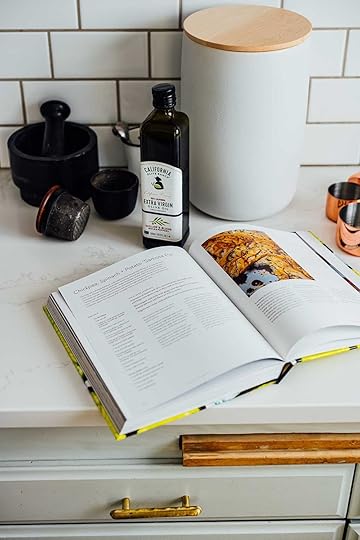
NIK: In cooking, fats provide texture and taste and, when used sparingly, they can also add nutrition. Fats are the richest sources of energy for our body’s cells. They help our bodies absorb fat-soluble vitamins. For example, the vitamin A in carrots is more easily absorbed when those carrots are cooked in a fat. In this way, when used correctly, fats can provide both flavor and nourishment. Many live by the notion of ‘food as medicine’. How does this apply for extra virgin olive oil?
MARY: Exactly. Extra virgin olive oil is a vehicle that helps our body absorb certain ingredients. We all know broccoli is good for you, high in fiber, vitamin C and K. But if you were to cook broccoli in extra virgin olive oil, this allows your body to absorb those nutrients more easily. And if you don’t include healthy fat in your diet, your body will not absorb these nutrients which can lead to malnutrition issues.
Fats are one of three macronutrients essential to human life and make up a large part of our bodies. Without fats, we wouldn’t be able to absorb vitamins A, D, E or K. But not all fats are created equal. According to some studies, healthy fats, such as extra virgin olive oil, can help you fight stress, improve mood swings, decrease mental fatigue, and can help manage your weight. Extra virgin olive oil also contains phenols or antioxidants, reducing the oxidative stress throughout your body. The main antioxidants are oleocanthal and oleuropein, both known for anti-inflammatory properties, like those found in Ibuprofen. So, going back to ‘food as medicine’, I personally would rather cook with extra virgin olive oil than take medication any time.
NIK: In the kitchen, we use fat in myriad ways. We use fat to build texture and mouthfeel characteristics such as “creamy” and “crispy.” We use fat to release both the flavor of fat-soluble substances, like the fiery hot capsaicin inside a chilli, as well as the color of fat-soluble pigments, like the bright red color of a chilli pepper. We also use it to extract the aromatic essential oils in lemon peels. And, perhaps most commonly, we use fat as an ingredient to transfer heat to food while cooking. A popular question concerning olive oil is whether one can use it for deep-frying, and I think the answer is yes—and no. Folks in the Mediterranean region cook exclusively with olive oil and use it to fry their food. Determining the smoke point of olive oil can get a little confusing. What can you tell us about that?
MARY: Olive oil is not just for salad dressings. You can fry, sauté, roast, even deep fry with extra virgin olive oil! One of the most common myths I hear is that you can’t cook with olive oil, that olive oil has a low smoke point, the point in which the oil begins to break down. This is not always the case. Rule of thumb, the fresher and higher quality extra virgin olive oil, the higher the smoke point. Our oils have been tested to 425, some even 450 degrees depending on the varietal and harvest date. In your average home, frying vegetables generally occurs around 350 degrees, so using a fresh extra virgin olive oil certainly exceeds this level. Cook away!
Olive oil does not get better with age so don’t save for a special occasion. Use it daily. Store bottles away from heat and light in a cool, dark cupboard or pantry, not next to the stovetop where it may be exposed to heat which degrades the oil quickly. And use it within two years of harvest date, or within ninety days of opening the bottle. It is essentially a fresh fruit juice, and just like a freshly squeezed orange juice, best not to consume after its best-by date.
Thank you so much for sharing your knowledge, Mary. To experience the use of cooking with olive oil, I will share another recipe from my book tomorrow. Come back then to find out what it is, and share a picture of what you end up making this week - I love seeing your results and hearing your feedback.
Click here to learn how to immerse yourself in The Flavor Equation experience, including a chance to win a year’s worth of olive oil from California Olive Ranch and other products from participating partners.
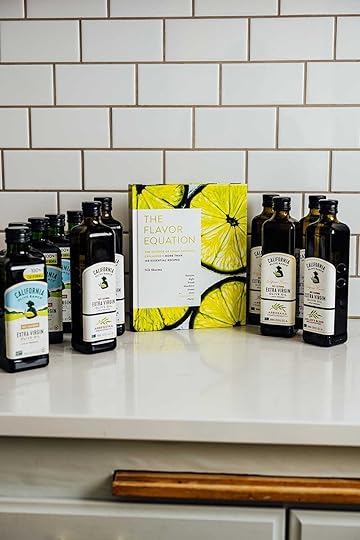
Don’t forget to enter the chance to win the GIVEAWAY from California Olive Ranch by clicking the link at the end and also get access to the 8 bonus recipes that you can access when you pre-order my book https://niksharma.chroniclebooks.com
September 29, 2020
The Flavor Equation: Roasted Cauliflower and Turmeric Kefir

This week, it’s all about the role Sight plays in The Flavor Equation and this recipe let’s you test some of those principles in your kitchen. Pay attention to the different colors and how they come together in this dish. Watch how the oil takes on the red color of the chilli, it’s a wonderful and marvelous transformation to behold. The brilliant bright sea of turmeric creates a backdrop for the roasted cauliflower, the herbs, and the rest of the ingredients in this dish.
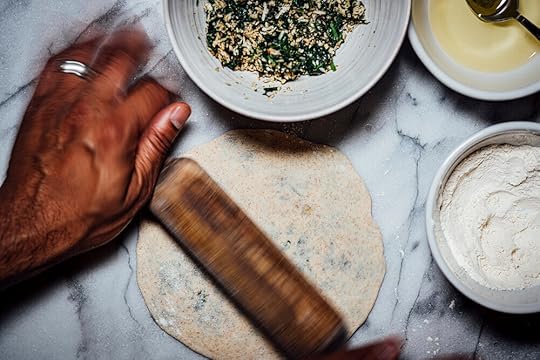
Click to Access the Bonus Recipes
Don’t forget to enter the GIVEAWAY o win two of my favorite cookware pieces from Staub. There’s a wonderful cast-iron roasting pan and a grill pan (which makes life easy if you want to grill but don’t own a grill or can’t go outside when the weather is bad). I use these often in my kitchen and I’ve owned them for several years, they’re sturdy and reliable and also look beautiful.
NOTE: In my opinion, the best accompaniment to this dish is the paratha and the Spinach, Paneer and Za’atar Parathas from the Bonus Recipe Collection works splendidly here.
Reprinted from The Flavor Equation by Nik Sharma with permission by Chronicle Books, 2020
ROASTED CAULIFLOWER IN TURMERIC KEFIR
This recipe takes advantage of kefir (buttermilk can be substituted) for its bright acidity. I prefer to use a bottle of freshly opened kefir or buttermilk here, because as these liquids age, the lactic acid increases, which not only leaves a strong tart taste but also causes the milk proteins to curdle quickly on heating.
The Flavor Approach
Using the acidity of fermented dairy such as kefir and the Maillard reaction creates a bittersweet taste and new aroma molecules in vegetables.
Chickpea flour, which contains starch, acts as a thickener for the base of the sauce.
The sound of the seeds sizzling is a good indicator of how hot your oil is; if the oil is hot enough, they will sizzle immediately and brown quickly.
SERVES 4
2 lb [910 g] cauliflower, broken into bite-size florets
1 tsp garam masala, homemade (recipe follows) or store-bought
Fine sea salt
4 Tbsp [60 ml] grapeseed or other neutral oil
5¼ oz [150 g] minced red onion
½ tsp ground turmeric
½ tsp red chilli powder (optional)
¼ cup [30 g] chickpea flour
2 cups [480 ml] fresh kefir or buttermilk
½ tsp cumin seeds
½ tsp black or brown mustard seeds
1 tsp red chilli flakes
2 Tbsp chopped cilantro or flat-leaf parsley
Preheat the oven to 400°F [204°C].
Place the cauliflower in a roasting pan or baking dish. Sprinkle with the garam masala, season with salt, and toss to coat. Drizzle with 1 Tbsp of the oil and toss to coat evenly. Roast the cauliflower for 20 to 30 minutes, until golden brown and slightly charred. Stir the florets halfway through roasting.
While the cauliflower is roasting, place a deep, medium saucepan or Dutch oven over medium-high heat. Add 1 Tbsp of the oil to the pan. Add the onions and sauté until they just start to turn translucent, 4 to 5 minutes. Add the turmeric and chilli powder and cook for 30 seconds. Lower the heat to low and add the chickpea flour. Cook, stirring constantly, for 2 to 3 minutes. Lower the heat to a gentle simmer and fold in the kefir, stirring constantly. Watch the liquid carefully as it cooks until it thickens slightly, 2 to 3 minutes. Fold the roasted cauliflower into the liquid and remove from the heat. Taste and add salt if necessary.
Heat a small, dry saucepan over medium-high heat. Add the remaining 2 Tbsp of oil. Once the oil is hot, add the cumin and black mustard seeds and cook until they start to pop and the cumin starts to brown, 30 to 45 seconds. Remove from the heat and add the chilli flakes, swirling the oil in the pan until the oil turns red. Quickly pour the hot oil with the seeds over the cauliflower in the saucepan. Garnish with the chopped cilantro and serve warm with rice or parathas.
MY GARAM MASALA
MAKES ABOUT ¼ CUP [25 G]
2 Tbsp cumin seeds
2 Tbsp coriander seeds
1 Tbsp black peppercorns
2 dried bay leaves
One 2 in [5 cm] cinnamon stick
12 whole cloves
1 whole black cardamom pod
3 or 4 green cardamom pods
1 tsp freshly grated nutmeg
Heat a small, dry stainless-steel or cast-iron skillet over medium-high heat. Turn the heat to medium-low and add the cumin seeds, coriander seeds, fennel seeds, black peppercorns, bay leaves, cinnamon, cloves, green and black cardamom pods, and star anise. Toast gently by rotating the pan to circulate the spices until the spices become fragrant, 30 to 45 seconds. Be careful not to burn them; if they do burn, discard them and start fresh.
Transfer the toasted spices to a small plate and let cool completely. Transfer the cooled spices to a mortar or spice grinder. Add the nutmeg and grind to a fine powder. Store the spice mix in an airtight container in a cool, dark place
September 27, 2020
The Flavor Equation: Spotlight on Sight
We first eat with our eyes. This was an early lesson I picked up when I started A Brown Table, the blog you’re reading today, and why this week’s focus on our journey through The Flavor Equation will be on Sight.
I assume before you try any of my recipes, you first look at the photos of the ingredients and the food. You’re likely to browse the pictures I’ve been sharing from The Flavor Equation to get a sense of the kinds of recipes I’m including in that book, including the bonus recipes you can access here.
The colors and shapes of visuals are critical in helping whet our appetites and making decisions about food; they help build our perception of what we eat. The rising popularity of images of food and cooking videos on social media platforms is perhaps one of the most powerful testimonials to the impact of visuals on eating.
Yet the adage “Don’t judge a book by its cover” is true, especially when it comes to brown-colored food. Not everything that tastes delicious looks good. In fact, one of the challenges I often face when styling and photographing dishes such as curries, stews, and gravies that are various shades of brown is how to make them appealing and enticing enough for people to want to cook them. That’s where the power of a garnish comes in; a few sprigs of fresh cilantro, parsley, or mint soften the look with their bright verdant tones and give the dish an appealing visual contrast.
View this post on InstagramI know I'm biased but I kinda like it a lot! Thank you @staub_usa
A post shared by Nik Sharma (@abrowntable) on Mar 20, 2019 at 4:48pm PDT
The visual theme for The Flavor Equation is a bit different. Since the book is about flavor and the science behind it, I wanted the look to have a fresh approach but still retain some of what’s unique to my style. Throughout the book, you will notice a closer look at ingredients...a much closer look. For some of the shots, I went back to the first camera I learned to use: the microscope. I reached out to the University of Berkeley where the Biological Imaging Facility was kind enough to let me come in and get high-res microscope images of some of the ingredients you see in this book from the spices to the crystals of salts and sugars.
As I learned to style food for my photographs, I began to pay close attention to the colors and shapes of ingredients and pair them with props that drew attention to the food to make it attractive. I picked up clues on color pairing by sifting through home design catalogs and noted how photographers composed images for architectural magazines by playing with shapes. It turns out there’s scientific support for my preferences for certain geometric shapes over others. In a study of people’s responses to shapes, participants preferred curved shapes over sharp angular edges.
I hope some of my photos from The Flavor Equation bonus recipes inspire you to cook. When you take pictures of your dishes and share them with me on Instagram, you’ll get a chance to win some of my favorite kitchen products, including some items from Staub. Find the details here .
My preference is for props with neutral colors, so the color of the food draws your eye in immediately. This is why I’m personally a big fan of Staub’s cast-iron cookware, particularly anything in their black finish line, as you may have noticed in my books. Staub’s cookware is easy to use, withstand high temperatures in the oven, and I’ve been using my cookware for several years. In fact, often they’re my go-to-cookware when I’m recipe testing.
A few years ago, I had the chance to visit the Staub factory in France and see them make their cast-iron cookware. Their endurance testing process is extremely rigorous, which is what makes their cookware so reliable. If you haven’t already, you can read more about my trip to the Staub Factory and about the “birth of Dutch Oven” here
The relationship between sight and flavor perception is complex, but by playing with the way in which food is presented to the eater, we have exciting new opportunities to create a stimulating and satisfying food experience.
I will be sharing a recipe tomorrow from The Flavor Equation that you actually won’t find in the bonus recipes: Roasted Cauliflower in Turmeric Kefir (Coming Soon). The bright colors of the turmeric and spice infused oil with the garnish of fresh green herbs makes the dish look vibrant and delicious, and you’ll see it’s cooked in a Staub pan that makes the color and texture in the photograph pop. While the photograph might whet your appetite, the actual dish is one of my favorites. I hope you’ll enjoy cooking it and sharing your own photographs with me using #TheFlavorEquation.
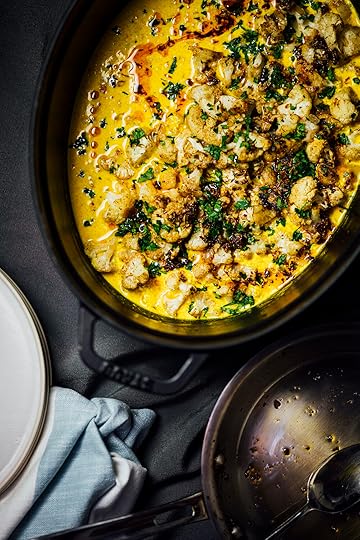
I hope this post inspired you to share more pictures of the food you’re cooking, whether it’s from The Flavor Equation or other recipes. Click here to learn how to immerse yourself in the Flavor Equation experience, including a chance to win a grill pan and baking dish from Staub and other products from participating partners.
Reprinted from The Flavor Equation by Nik Sharma with permission by Chronicle Books, 2020
September 22, 2020
The Flavor Equation: Gingerbread Cake with Date Syrup Bourbon Sauce
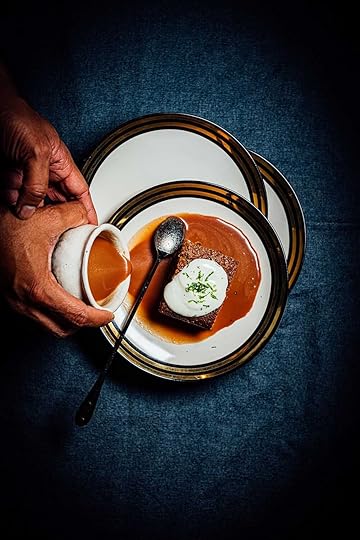
We’re heading into fall, cooler temperatures necessitate warmer flavors and this week I share my recipe for the classic gingerbread cake that comes out of the Chapter on Fieriness in my new book, The Flavor Equation. Ginger is prized for its fragrance and heat in both sweet and savory preparations and in gingerbread, it’s the star ingredient.
This is the week where we’re taking a closer look at Sound. When making this cake, pay attention to the different sounds that arise during cooking, which of these do you find most useful, are they helping you gauge endpoints at different stages of the recipe? One thing, I've picked up while zesting the lime at the end for this cake, I can tell by the sound the lime makes as it rubs against the zester, whether I’ve exhausted that part of the rind and if I need to move on to a different part of the lime. Other sounds are much more obvious like the sizzling sound of melting butter in the pan when the sauce is prepared.
And don’t forget that you can access additional bonus content from The Flavor Equation, and also find out how to enter to win an amazing package of kitchen goodies courtesy of my promotional partners, here. Good luck!
Reprinted from The Flavor Equation by Nik Sharma with permission by Chronicle Books, 2020
GINGERBREAD CAKE WITH DATE SYRUP BOURBON SAUCE
I’m of the opinion that all gingerbread cakes must have ginger in both the ground spice form and a bit of the crystallized form. The Date Syrup Bourbon Sauce gives it that extra edge of smooth richness and is inspired by one of the top-ten desserts I’ve eaten: the date cake with whiskey sauce at Gjelina in Los Angeles. Use a Microplane zester for the lime zest to get a fine grate.
THE FLAVOR APPROACH
Ginger and black pepper give this cake its warmth.
The aromatic molecules in the spices and lime zest are extracted into the butter, where they are highly soluble, before they are incorporated into the cake batter.
There are a few ways to tell if a cake is done: You can insert a skewer through the center, and it should come out completely clean. But you can also tell if a cake is done by gently pressing the surface; it should spring back to its original form in a few seconds. If the cake isn’t done, it will remain depressed after the pressure is removed, as the flour has not yet formed the necessary structure.
SERVES 12 / MAKES ONE 9 IN [23 CM] SQUARE CAKE AND 2 CUPS [480 ML] SAUCE
For the cake:
¾ cup [165 g] unsalted butter, at room temperature, plus extra for greasing
1 Tbsp ground ginger
1 tsp ground black pepper
1 tsp ground green cardamom
1 tsp lime zest
2½ cups [350 g] all-purpose flour
1½ tsp baking soda
½ tsp fine sea salt
2 oz [55 g] crystallized ginger, chopped
¼ cup [50 g] sugar
¼ cup [85 g] honey
1 cup [320 g] unsulfured molasses or sorghum
½ cup [120 g] crème fraîche
2 large eggs, at room temperature
1 cup [240 ml] water warmed to 158°F [70°C]
For the date syrup bourbon sauce:
2 Tbsp unsalted butter
1 cup [240 ml] date syrup
1 cup [240 ml] heavy cream
2 Tbsp honey bourbon or whiskey
¼ tsp fine sea salt
For serving:
Lightly sweetened crème fraîche
Fresh lime zest
Grease a 9 in [23 cm] square baking pan with a little butter and line with parchment paper. Grease the parchment paper.
Melt the butter in a small saucepan over medium heat. Remove from the heat and stir in the ginger, black pepper, cardamom, and lime zest. Let steep for 10 minutes.
Sift the flour, baking soda, and salt through a fine-mesh sieve into a large bowl. Reserve 2 Tbsp of the flour mixture in a small bowl, add the crystallized ginger to it, and toss to coat well.
Preheat the oven to 325°F [163°C]. Place the sugar, honey, and molasses in the bowl of a stand mixer. Scrape out the melted butter from the saucepan with a silicone spatula and add it to the mixer bowl. Using the paddle attachment, mix on medium speed until it turns a toffee-brown color, 4 to 5 minutes. Stop the mixer and scrape the sides of the bowl, add the crème fraîche, and mix on low speed until combined, 1 minute. Stop and scrape down the bowl. Mix in 1 egg at a time on medium speed until combined. Add the sifted dry ingredients and mix on low speed until combined, about 30 seconds. Stop and scrape down the sides of the bowl. On low speed, add the water and mix until combined. Remove the bowl from the mixer and scrape the sides. Fold in the crystallized ginger and transfer the cake batter to the prepared baking pan. Bake until the cake is golden brown on the surface and a skewer inserted in the center comes out clean, 50 to 60 minutes. Remove from the oven and let cool completely in the pan. Run a knife along the edges of the pan to release the cake and transfer to a serving plate.
To prepare the date bourbon sauce, melt the butter in a small saucepan over medium-high heat. Swirl the butter in the saucepan until the milk solids start to turn red. Whisk in the date syrup and bring to a boil. Remove from the heat and whisk in the cream, followed by the bourbon and the salt. Transfer to an airtight jar and refrigerate until ready to use. You can make this sauce 2 days ahead of time.
To serve, cut the cake into slices and serve with sweetened crème fraîche, a little lime zest, and a generous drizzle of the date bourbon sauce.
September 20, 2020
The Flavor Equation: Spotlight on Sound
Welcome to my second installment of our journey of flavor as we prepare for the publication date of The Flavor Equation (October 27, learn more here). Last week I introduced you to both Emotion and Taste—and mentioned the promotion I’m running with some remarkable promotional partners over the next few weeks. I hope you’ll take a look here at how you can access some of the great content I’ve put together for you, and take part in winning the great prize packet.
This week I’m going to focus on one of the other senses that makes up the Flavor Equation: Sound.
At home, we rely on sound quite a bit in the kitchen; we look for certain sounds during eating and pay attention to certain sounds when we cook. Sounds can indicate quality. Freshness can be conveyed by the crunchy sound of a vegetable, like a stick of celery as it breaks, the crisp sound of pappadums as they shatter, and the hollow sound that comes from tapping a perfectly ripe watermelon.
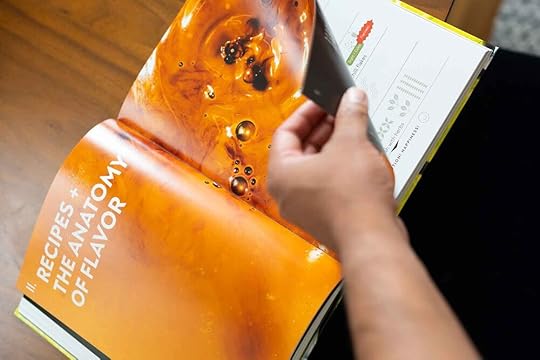
Certain sounds can act as cues during cooking and give us an indication of how to proceed. When preparing the tadka (a flavor-boosting spice concoction of spices infused in a hot fat or oil), the crackling sound that arises when the mustard seeds sputter in the pan of hot oil indicate that the oil is hot enough to draw the flavors from the seeds; within a few seconds, that sound ceases and it’s time to take the pan off the heat.
While researching this book, I also spoke with several people who were visually impaired to understand how they used sound in their cooking. The sound of warm or cool water as it dropped from the faucet into a pot, the sizzling sound an egg makes as soon as it hits a hot skillet, and the way in which a whisk starts to make less noise as an emulsion builds, are just some examples that I learned were ways to use sound as a marker for different stages of cooking.
Sounds can also affect the perception of flavor. Some restaurants might play a curated list of music to enhance the dinner experience; others take might it a step further. Restaurants like the famed Alinea in Chicago play with sounds in various ways, take for instance the way in which frozen soup pearls made from English peas are dropped into a bowl, that sound coupled with the ambience of a very quiet room creates a very dramatic effect for the diner.
The sound of spoken words can also influence our perception of taste. For example, in one study separate soundtracks were played, one with the word “bitter” and the other the word “sweet,” while people ate honeycomb candy, a bittersweet treat prepared by caramelizing sugar. The candy eaten while hearing the word “bitter” was perceived as significantly more bitter than the one eaten while hearing the “sweet” soundtrack.
I listen to music when I cook or write recipes and if you haven’t seen it already, I put together a Spotify list of the music I listen to when I’m cooking that you can find here. You can access it directly – though you’ll need a Spotify account to listen to all the songs – and I hope you’ll enjoy it. It’s a way to experience all the elements of The Flavor Equation over the next few weeks.
The next time you’re eating or cooking, pay attention to the sounds around you and the sounds the ingredients and food make, and take note. Are these sounds amplifying a sensation, or are they acting as indicators that help you cook?
Hope you enjoy listening to my music, and let me know what sounds you love to hear in the kitchen, whether they be crackling of the oil heating or the beat of the music you are playing in the background.
One more thing for reading this far: Here are two bonus recipes from my book [insert links for Sumac and Saffron Refresher and Gingerbread Cake with Date Bourbon Sauce (recipe coming soon) that I’m sharing with you to give you something to do as you wait for The Flavor Equation. There are also 8 bonus recipes that you can access when you pre-order my book and share the information here https://niksharma.chroniclebooks.com
September 18, 2020
spicy eggplant with ground lamb
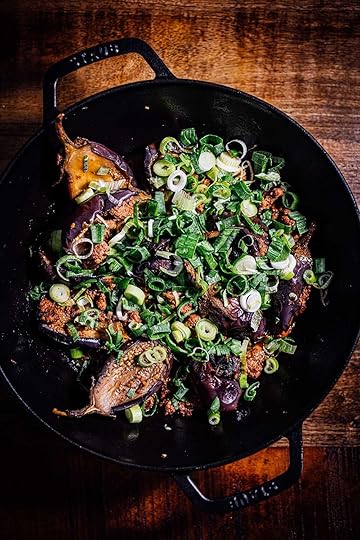
Disclaimer: This post was sponsored by the American Lamb Board . All opinions expressed are solely my own.
Of all the cuts and types of lamb available, I always keep a bit of ground American lamb in my freezer. There’s so much that can be done with ground meat - shape them into burgers or kebabs, add them to a casserole or a stir-fry like I’ve done today. Savoriness and heat are built in this recipe through a few pantry staples.
Sambal oelek, a chilli, garlic, and ginger based condiment that comes from Indonesia (can be obtained at your local grocery store) is one I encourage you to keep at all times in your pantry. It’s a wonderful resource that you can use to build and layer flavor in the food you cook at home.
You might be wondering about the addition of salt to the eggplant prior to cooking. Adding the salt to the eggplant helps reduce some of the internal liquid inside the vegetable through osmosis, it does not however reduce bitterness. This is a common misconception. Most of the eggplants we eat have been bred to reduce their bitterness and what little is left behind, is masked by the taste of salt and other spices added to the recipe. Salt does not draw the bitter molecules out of the eggplant. Here it helps improve the texture of the cooked eggplant.
This recipe leans towards the pungent side, if you prefer less heat, use less chilli and cut back on the sambal oelek. You can use lemon juice in this recipe but I prefer the aroma of limes here, it simply makes it much more brilliant but I also have a special fondness for limes.
And before I forget, serve this eggplant dish over plain rice.
spicy eggplant with ground lamb
Makes 4 servings
4 baby eggplants, cut in half
Fine sea salt
3 tablespoons fresh lime juice
2 shallots, peeled and thinly sliced into rings
2 Tbsp neutral oil such as grapeseed oil
1 lb [455 g] ground American lamb
1 Tbsp low-sodium soy sauce
1 tsp fish sauce
1 tsp ground black pepper
3 Tbsp sambal oelek
2 to 3 scallions, both white and green parts thinly sliced
Place the halved eggplants in a medium bowl, sprinkle 1 teaspoon of salt over the cut sides, add 1 Tbsp of lime juice and let sit for 10 minutes. While the eggplant sits, prepare the lamb.
Heat a wok or large saucepan with a lid over high heat. Add the oil and once the oil is hot, add the shallots and sauteé for about 6 to 8 minutes, till they turn toffee brown. Rinse the eggplants under cold water, pat them dry with a clean kitchen towel and add them to the shallots, stir-fry till their skin wilts and then flesh is light brown, about 6 minutes. Transfer the shallots and eggplants to a plate. Return the wok to the stove.
Add the ground lamb directly to the wok and cook till the lamb browns and releases its juices. Add the sambal oelek, soy, and fish sauce. Fold to combine well. Return the shallots and eggplant to the lamb. Add ½ cup [120 ml] water and cover the wok with a lid. Reduce heat to medium-low and cook till the eggplant is tender, about 20 minutes. Stir in the remaining lime juice. Taste and season with salt. Garnish with the scallions and serve immediately. This dish is best eaten warm.
September 15, 2020
The Flavor Equation : Sumac and Saffron Refresher
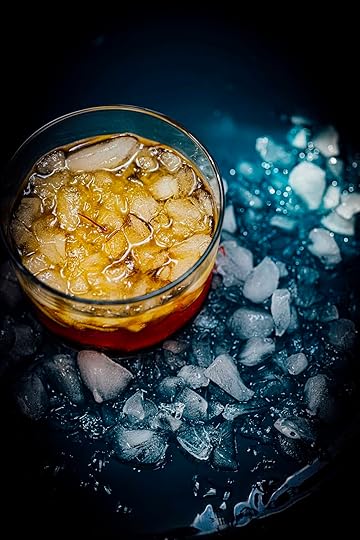
Over the next few weeks, I’m going to be giving you little snippets from my upcoming book, The Flavor Equation, and share a new recipe for you to try until my book goes on sale October 27. This week it’s all about Emotion and Taste and their role in Flavor. Our emotions help influence our taste and taste in turn helps influence our emotions. When I’m happy and want to celebrate I often turn to lemon, lime, or passion fruit based sweets. I find them extremely comforting. When I’m feeling down, I lean towards food that I ate as a kid when I was feeling sick or sad; kanji/congee is a dish that does that for me. Think about the last time you were happy or sad, what did you crave or what did you avoid eating and drinking?
This week’s recipe comes from the bonus collection of recipes that didn’t make it into The Flavor Equation due to space constraints. This Sumac and Saffron Refresher was originally created for the Brightness chapter, which focuses on the taste of acids (and was also featured by the lovely folks at Epicurious). Sumac comes from a berry that is dried and ground to a powder. You’ll often see it used in Middle Eastern and Native American cultures and adds a sour taste with the extra advantage of being dry — you won’t increase the liquid volume of the dish. In India and in the Middle East, we use saffron to add color and aroma to our food. Some of my fondest memories involve opening the lid of warm steamed bowls of pulaos and biryanis scented with saffron. This chilled drink captures all those special flavors and invokes some of the happiest moments I have of growing up; I hope it will make you happy too when you try it.
You can find more bonus content I created for The Flavor Equation, and find out how to enter to win a remarkable set of kitchen items courtesy of my promotional partners, here.
SUMAC & SAFFRON REFRESHER
Unlike a strongly acidic lemonade or limeade, this sumac syrup is tart but mild. The saffron and cardamom are pounded to release their color and flavors into the hot syrup.
THE FLAVOR APPROACH
Sumac is rich in citric, malic, and tartaric acids but also bitter tannins. Steeping it in water dissolves the water-soluble acids. Gallotannin, one of the main tannins present in sumac, is bitter to taste and dissolves in water easily. Avoid steeping the sumac for too long or its tannins will make the syrup bitter.
Saffron is ground to a fine powder using a little sugar as an abrasive. Grinding saffron increases the amount of color and flavor extracted than would be achieved if the strands were used directly.
Club soda if used, adds a second note of acidity from the carbonic acid as well as the crackling sound of bubbles that create a sensation via chemesthesis.
SERVES 4
15 to 20 saffron strands, plus a few extra strands for garnish
½ cup [100 g] sugar
3 green cardamom pods, smashed
¼ cup [30 g] ground sumac
3 cups [700 ml]
chilled club soda or water
Grind the saffron with 2 Tbsp of sugar to a fine powder using a mortar and pestle.
In a medium saucepan over medium-high heat, combine 1 cup [240 ml] water, sugar, cardamom, and powdered saffron mixture and bring to simmer, stirring until the sugar dissolves. Remove from the heat and stir in the sumac. Cover the saucepan with a lid and let it steep for 30 minutes, no more. Strain the liquid through a fine mesh strainer over a medium bowl and chill before ready to serve.
To serve, fill four tall glasses with ice. In a large pitcher, stir the syrup with the chilled club soda or water. Pour 1 cup [120 ml] of the drink into each glass. Garnish each glass with 1 or 2 saffron strands. Store any leftovers in an airtight container in the refrigerator for up to 1 week.
Reprinted from The Flavor Equation Bonus Recipes by Nik Sharma with permission by Chronicle Books, 2020



